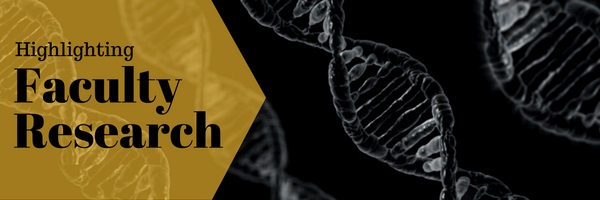07 April 2022
Below are College of Veterinary Medicine publications added to the Scopus database in the last 31 days.
Congratulations to all the recently published authors!
Note: Access to the full text may be subject to library subscriptions.
Tang Z, Hegde S, Zhao J, Zhu S, Johnson KA, Lorson CL, et al. CRISPR-Mediated Enzyme Fragment Complementation Assay for Quantification of the Stability of Splice Isoforms. ChemBioChem. 2022. doi: 10.1002/cbic.202200012.
Henry EC, Strugari M, Mawko G, Brewer K, Liu D, Gordon AC, et al. Precision dosimetry in yttrium-90 radioembolization through CT imaging of radiopaque microspheres in a rabbit liver model. EJNMMI Physics. 2022;9(1). doi: 10.1186/s40658-022-00447-1.
Sheridan MA, Zhou J, Franz AWE, Schust DJ. Modeling the Human Placenta to Investigate Viral Infections During Pregnancy. Frontiers in Virology. 2022;2. doi: 10.3389/fviro.2022.831754.
Finkel RS, Lorson CL. Friend or Foe(tal): challenges in development of a large animal model for pre-clinical fetal gene therapy. Gene Therapy. 2022. doi: 10.1038/s41434-022-00327-4.
Muhsin SA, Kobashigawa E, Al-Amidie M, Russell S, Zhang M, Zhang S, et al., editors. A Microfluidic Biosensor for Rapid Detection of Endemic Chronic Wasting Disease. IEEE Symposium on Mass Storage Systems and Technologies; 2022.
Emter CA. A ‘Swine Time’ for HFpEF: Multiple animal models for a myriad of clinical phenotypes. Journal of Molecular and Cell Cardiology. 2022;167:15-6. doi: 10.1016/j.yjmcc.2022.03.004.
Rosenfeld CS, Denslow ND. Measures to curb endocrine-disrupting chemicals in the United States. Neuroendocrine Regulation of Animal Vocalization: Mechanisms and Anthropogenic Factors in Animal Communication. 2020. p. 347-53.
Rosenfeld CS, Hoffmann F. Neuroendocrine Regulation of Animal Vocalization: Mechanisms and Anthropogenic Factors in Animal Communication. 2020. 1-403 p.
Rosenfeld CS, Hoffmann F. Final thoughts on understanding animal vocalizations in the 21st century. Neuroendocrine Regulation of Animal Vocalization: Mechanisms and Anthropogenic Factors in Animal Communication. 2020. p. 391-3.
Rosenfeld CS, Katrin Schenk A. Endocrine disruptors and potential effects on communication in rodents and other species. Neuroendocrine Regulation of Animal Vocalization: Mechanisms and Anthropogenic Factors in Animal Communication. 2020. p. 337-46.
Maitz CA, Tate D, Bechtel S, Lunceford J, Henry C, Flesner B, et al. Paired 18F-Fluorodeoxyglucose (18F-FDG), and 64Cu-Copper(II)-diacetyl-bis(N(4)-methylthiosemicarbazone) (64Cu-ATSM) PET Scans in Dogs with Spontaneous Tumors and Evaluation for Hypoxia-Directed Therapy. Radiation Research. 2022;197(3):253-60. doi: 10.1667/RADE-20-00186.1.
Chen PR, Rowland RRR, Stoian AM, Petrovan V, Sheahan M, Ganta C, et al. Disruption of anthrax toxin receptor 1 in pigs leads to a rare disease phenotype and protection from senecavirus A infection. Scientific Reports. 2022;12(1):5009. doi: 10.1038/s41598-022-09123-x.
Ierardi RA, Anderson MN, Bryan JN, Matheson JS, Sample SH, Coates JR. Epidural myelolipoma in a Silken Windhound. Veterinary Clinical Pathology. 2022. doi: 10.1111/vcp.13090.
Norquest CJ, Maitz CA, Keys DA, Moore M, Bryan JN, Ehling TJ, et al. Fracture rate and time to fracture in dogs with appendicular osteosarcoma receiving finely fractionated compared to coarsely fractionated radiation therapy: A single institution study. Veterinary Medicine Science. 2022. doi: 10.1002/vms3.782.
Raleigh JS, Mayhew PD, Visser LC, Milovancev M, Kuntz CA, Formaggini L, et al. The development of ventricular fibrillation as a complication of pericardiectomy in 16 dogs. Veterinary Surgery. 2022. doi: 10.1111/vsu.13795.

The Zalk Veterinary Medical Library is always happy to highlight CVM Faculty Research!
Did we miss anything? Please let Rae know.
